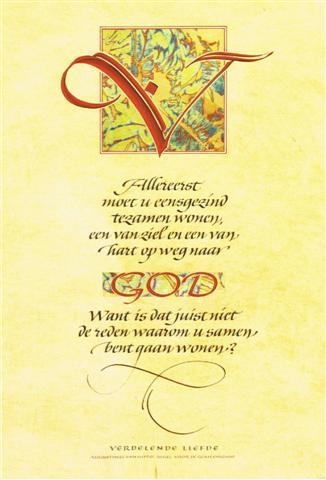Augustine's Rule in the World
Augustine cannot be called the founder of a religious order in the modern, legal sense of that word. We do know with certainty that he founded at least three monasteries and desired that monastic life would spread throughout Africa. Possidius' work The Life of Augustine mentions that there was also a women's monastery in Hippo under the leadership of a sister of Augustine. Moreover, a large number of monks from Augustine's monasteries were elected bishops in other African cities, where they in turn founded monasteries based on Hippo's model. For example, we know of about fifteen monasteries with an Augustinian character in North Africa. Even after the invasion of the Vandals and the death of Augustine, monastic life continued to exist in Africa. Only the Arab raids put an end to this in the years 647-668. In the period between 430 and 668, many monks went into exile. They fled to surrounding countries, but we do not know whether they continued to live in communities of Augustinian inspiration. We may say of the scattered monks of Africa that they disappeared into the night of history. There is no certainty regarding a historical continuity between Augustine's monasteries and later monastic life outside Africa.

Influence of the Rule
If we look at the history of the manuscripts of Augustine's Rule, we see a certain continuity insofar as the spirit of the Rule lived on in the centuries following Augustine's death. After all, we possess no fewer than fourteen manuscripts dating from before the year 1000, a rare fact in itself. From the time of Caesarius of Arles († 542/543) via Benedict of Nursia († 550) to the time of Benedict of Aniane († 820/821), we observe the influence of the Rule of Augustine. However, we must wait until the end of the ninth century to encounter a strong desire for a full life in community according to Augustine's spirituality among the canons regular in Reims (975). This reform movement led to the acceptance of the Rule of Augustine by the canons regular as the standard for their community life at the end of the eleventh century. In the twelfth century the Canons Regular of the abbey dedicated to Saint Victor and founded in Paris in 1108 followed. This was followed by Norbertus van Gennep, who founded the Premonstratensian Canons in 1120, and Dominic, founder of the Preachers in 1215. Also the Crosiers, probably founded by Dietrich von Zell around 1210, adopted the Rule of Augustine, as did the Mercedarians founded by Petrus Nolasco in 1218, the Canonesses of the Holy Sepulcher founded in the early thirteenth century, and by the Order of the Servites of Saint Virgin Mary founded in 1240.
In 1244, the Holy See united several groups of hermits under the name Order of the Eremites of Saint Augustine (O.E.S.A.), now known as the Order of Saint Augustine (O.S.A.). In the following centuries we find a significant number of communities living according to the Rule of Augustine. The most important are: the Brethren of the Common Life, Augustinian Canons, representatives of the Devotio Moderna together with the famous monastery of Windesheim, founded by Florentius Radewijns in 1384 and 1387 respectively, the Alexians, most of whom accepted the Rule in 1450, the Hospitallers founded by John de Deo around 1540, the Piarists founded by Joseph Calasanctius in 1597, the Order of the Visitation of Saint Mary founded by Jeanne de Chantal and Francis de Sales in 1610, the Sisters of Our Lady of Charity (or: of Refuge) founded by Jean Eudes in 1641, the Barmherzige Brűder von Maria Hilf founded by Peter Friedhofen in 1850, the Augustinians of the Assumption founded in Nimes by Emmanuel d'Alzon in 1850.

